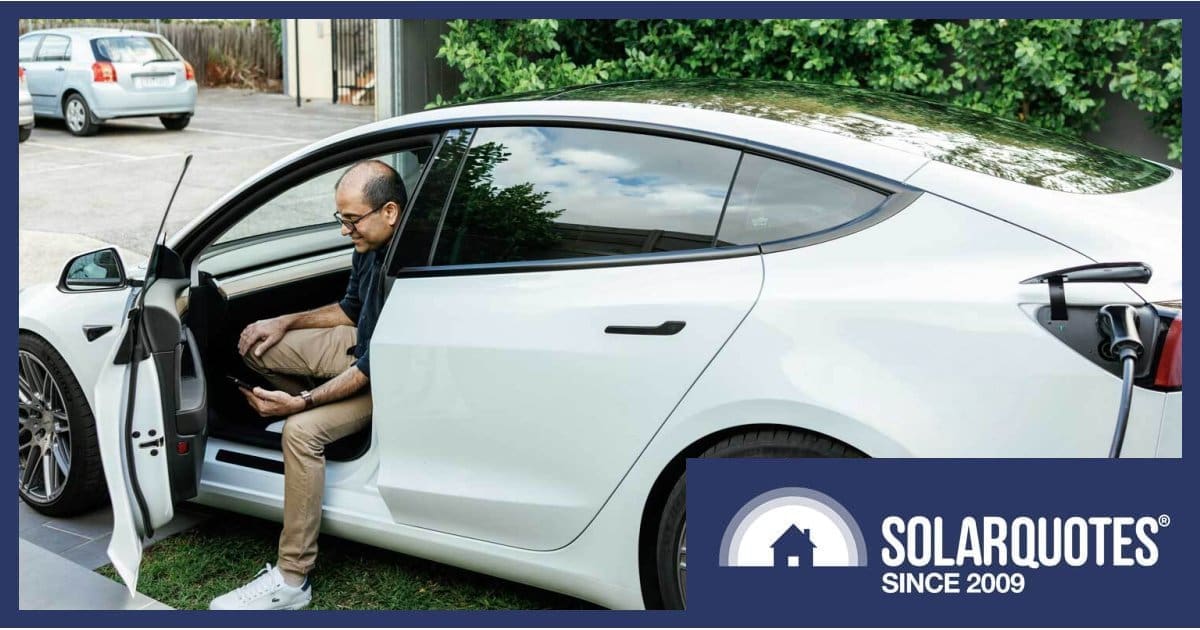Late last month, the beta version of Amber Electric’s “smart and simple” EV charging solution became available to all its customers who have a compatible electric vehicle.
But first, briefly …
What Is Amber Electric?
Amber Electric is an Australian firm enabling its customers access to real-time wholesale electricity prices for their imports and exports, which is of most benefit to those with solar panels *and* batteries. The company makes its money by charging $22/month – and that’s it. Unlike a Virtual Power Plant (VPP), you don’t have to give up control of your battery unless you wish to, and the focus is on benefiting the customer rather than the VPP operator.
Given the operating model, it requires some engagement to get the most from the service. SolarQuotes’ Jono is a customer – you can read his Amber review here.
The firm has been building on its capabilities; including optimised EV charging for customers.
Amber For EVs Features
200 of the company’s customers were involved with testing the alpha version of Amber for EVs (A4EVs), and the beta version available now is where the firm will “polish it up” ready for the full launch of the service.
Some of the features in the Amber for EVs beta as it stands currently:
- Solar charging: If you have panels installed, automatically charge from excess solar only without needing to fork out for extra hardware or other services.
- Cheaper charging: Automatically charge when grid electricity is cheapest (and usually it’s greener too); stop when it’s expensive.
- Recovery charging: Specify a minimum battery charge level and the app will charge faster when you need to get back up to that level.
- See how much each charge costs you
Amber wholesale prices fluctuate, going into negative territory on occasion. If you’re fortunate enough to be charging during these periods, Amber pays you to use energy at these times.
EV/Charger Compatibility
Those wanting to give it a whirl will need either a Tesla Model 3, Y – or a post-2021 S or X. The company will be adding to the list of compatible EVs and chargers in the coming months. In terms of EV chargers, Amber states:
“If you have an OCPP-compatible charger but are interested in becoming an early Amber for EVs adopter, please consider enrolling and adding yourself to our testing waitlist so we can trial Amber for EVs with your device. At present, we will be inviting OCPP-charger customers to enrol for testing on an invite-only basis.”
OCPP stands for Open Charge Point Protocol – it’s a communication standard allowing third parties to monitor and control devices supporting it. If you’re in the market for a home EV charger at the moment, it’s a feature you’ll want to have whether you use Amber or not. Learn more about OCPP here.
To get started with A4EVs, you’ll need version 6.2.7 of the Amber app – the version is displayed at the top of the settings page. On the settings page, look for “Amber for EVs” and then tap on “Amber for EVs Beta Entrance” to start the enrolment process.
Home Battery Owners, Take Note
Amber warns that currently their app cannot co-optimise an EV and a home battery, but it’s high on their list of priorities during the beta phase. The battery and EV optimisation systems are pretty much running independently at present, but the company says you can take advantage of both Amber for EVs and SmartShift (for home batteries) now if you are willing to fiddle.
“The ultimate goal is offering a fully-optimised home energy system that works in harmony to reduce your energy costs, increase your renewables usage and support the renewables transition.”
Amber says smart EV charging is also the first step in its Australian Renewable Energy Agency (ARENA)-backed program to develop a Vehicle-to-Grid (V2G) solution for compatible EVs.


 RSS - Posts
RSS - Posts



I Have been an Amber customer for about 10 months and apart from some initial set up problems between Amber and SolarEdge for my SE system (similar to those reported by Jonathon Wedge in his Amber review last year), I have generally been happy with Amber. In particular Amber for Batteries, which gives me control over charging/discharging my home battery, and SmartShift which allows me to sell excess energy at optimum prices. Also, Solar Curtailment, which automatically prevents me exporting to the grid at negative prices.
I enrolled to join Amber4EVs over a month ago, but have had a less than positive experience. I charge my EV (Tesla Model Y) at home primarily with excess solar, seldom charging from the grid, so Amber4EVs’ grid controls are not of much interest to me. As soon as I joined Amber4EVs the Excess Solar charging capability of my SolarEdge charger disappeared. When I spoke to SE about this, they said Amber taking control of my battery disables Excess Solar on my SE charger (even though Amber have had control of my battery for SmartShift for many months without any problems!) Then there was a delay of about a month in Amber getting Amber4EVs working on my Amber app. Finally, when it was working it told me Excess Solar Charging was “unavailable on your home setup”.
I have been trying to get someone from Amber to help sort out this problem, but after initially talking to an Amber support software engineer, I have heard nothing for over 2 weeks, despite multiple emails. I now have to control my EV charging manually, despite having that capability in my charger, which I cannot use.
So I have decided to cancel my Amber4EVs membership. This is disappointing as I support what Amber are trying to do, but their customer support leaves a lot to be desired.